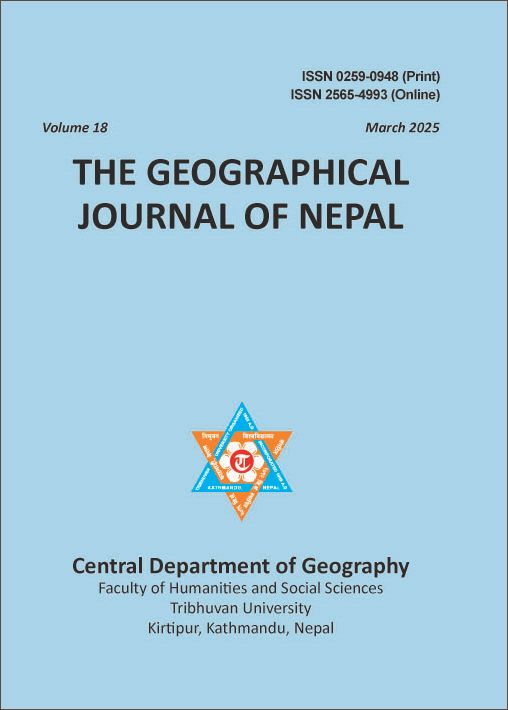Assessing the Agricultural Service Delivery Functions of Local Governments in Nepal
DOI:
https://doi.org/10.3126/gjn.v18i1.77065Keywords:
Local government, agriculture, agriculture service delivery, commercial farming, livelihoodAbstract
Agriculture sector is primary source of national economy and family livelihoods in Nepal. This study thus aims to appraise existing agricultural delivery functions of local governments that have affected livelihoods of the Nepalese farmers. In doing so, we purposively selected Faktalnglung rural municipality (Mountain), Maijogmai rural municipality (Hill) and Kamal rural municipality (Tarai) of Mechi Zone as a field of the study. The required information were generated through in-depth interview (n=15) and focus group discussion (n=6) which were then interpreted from the theoretical perspectives of multi-level governance and agriculture modernization. The study found that local governments are functioning agriculture service delivery through devolved power/jurisdictions. The farming activities are becoming commercialized and modernized that helped to improve livelihoods of the farmers residing in Mountain, Hill and Tarai regions. Some skilled and energetic farmers are willing to involve in agro-tourism entrepreneurship development. That is possible due to the financial subsidy support system, vocational skill development training programs and access to local markets. However, an integrated approach that links agriculture with tourism activities including cooperation among the government, community people and private enterprises is essential. Therefore, local governments need to develop and implement bylaws to functionalize agricultural service delivery functions efficiently and effectively. The federation also need to implement land use plan, supportive policies for commercial farming and youth entrepreneurship for promoting agro-tourism activities.
Downloads
Downloads
Published
How to Cite
Issue
Section
License
Copyright (c) 2025 The Author(s)

This work is licensed under a Creative Commons Attribution 4.0 International License.
© Authors




